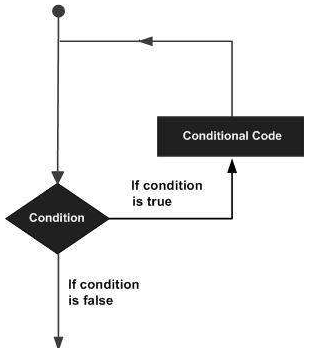Theoretical Paper
- Computer Organization
- Data Structure
- Digital Electronics
- Object Oriented Programming
- Discrete Mathematics
- Graph Theory
- Operating Systems
- Software Engineering
- Computer Graphics
- Database Management System
- Operation Research
- Computer Networking
- Image Processing
- Internet Technologies
- Micro Processor
- E-Commerce & ERP
Practical Paper
Industrial Training
Swift - Loops
There may be a situation when you need to execute a block of code several number of times. In general, statements are executed sequentially: The first statement in a function is executed first, followed by the second, and so on.
Programming languages provide various control structures that allow for more complicated execution paths.
A loop statement allows us to execute a statement or group of statements multiple times. Following is the general from of a loop statement in most of the programming languages −
Swift 4 programming language provides the following kinds of loop to handle looping requirements. Click the following links to check their detail.
Sr.No |
Loop Type & Description |
| 1 | for-in This loop performs a set of statements for each item in a range, sequence, collection, or progression. |
| 2 | while loop Repeats a statement or group of statements while a given condition is true. It tests the condition before executing the loop body. |
| 3 | repeat...while loop Like a while statement, except that it tests the condition at the end of the loop body. |
Loop Control Statements
Loop control statements change execution from its normal sequence. When execution leaves a scope, all automatic objects that were created in that scope are destroyed.
Swift 4 supports the following control statements. Click the following links to check their detail.
Sr.No |
Control Statement & Description |
| 1 | continue statement This statement tells a loop to stop what it is doing and start again at the beginning of the next iteration through the loop. |
| 2 | break statement Terminates the loop statement and transfers execution to the statement immediately following the loop. |
| 3 | fallthrough statement The fallthrough statement simulates the behavior of Swift 4 switch to C-style switch. |


